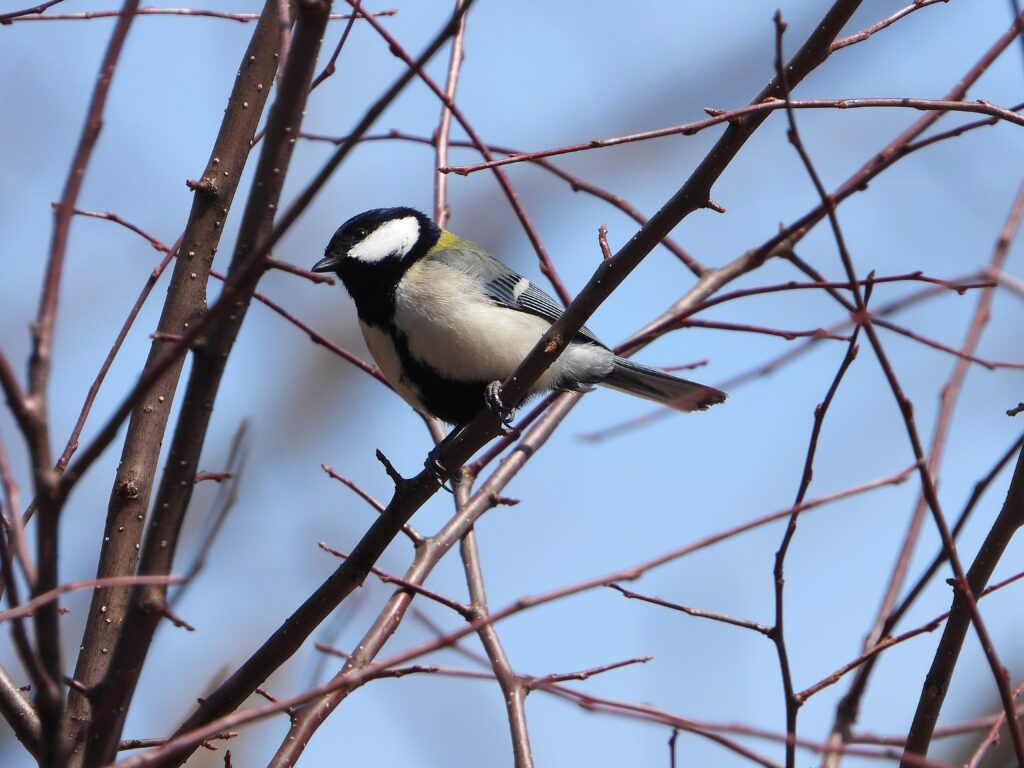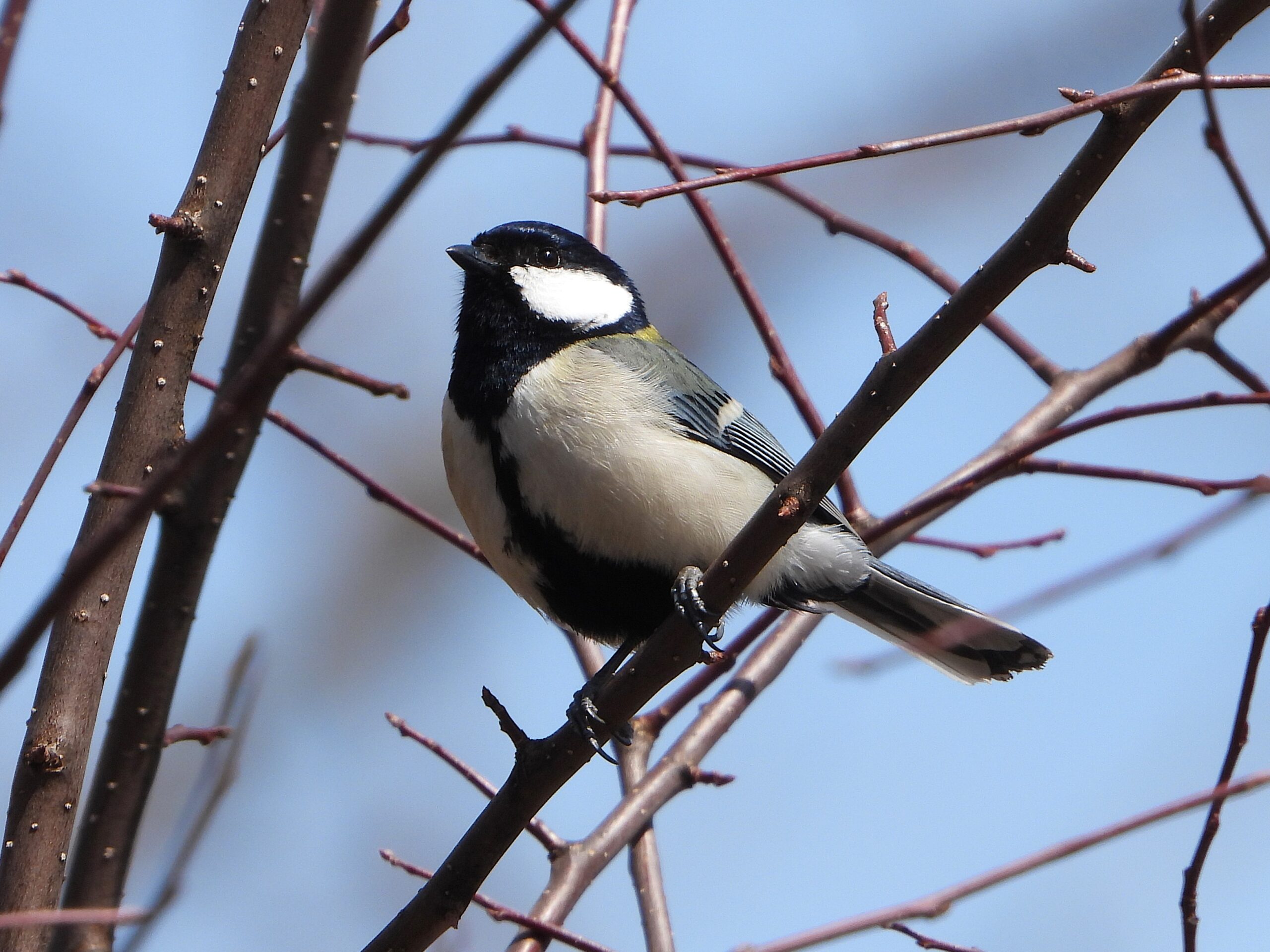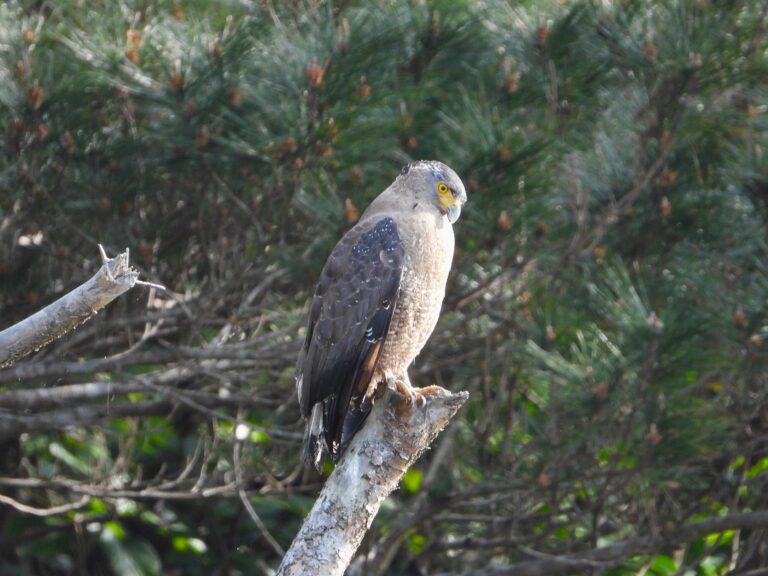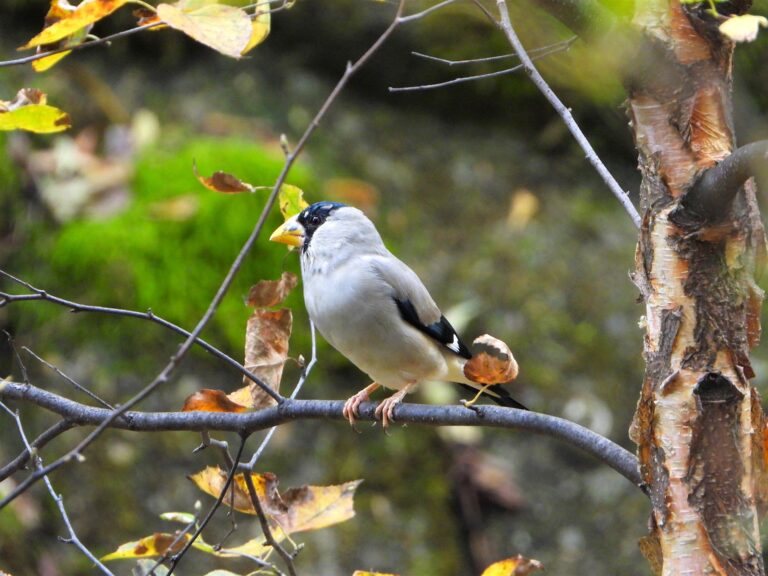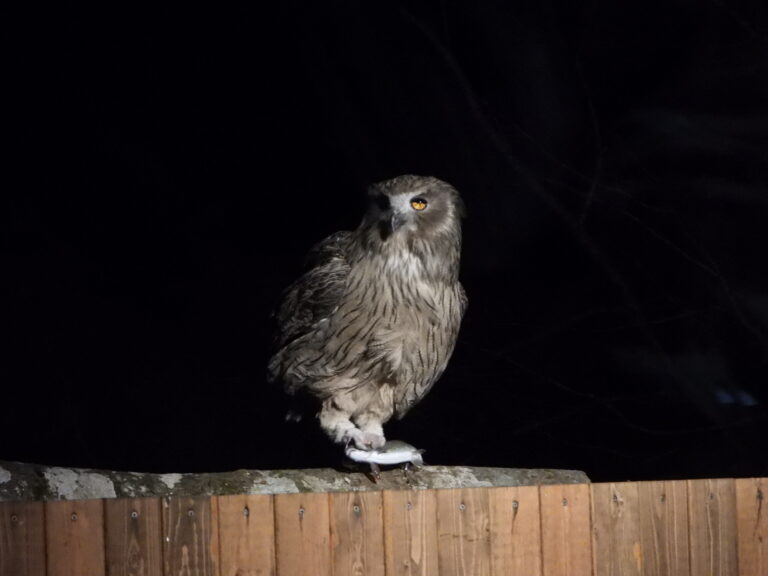Japanese Tit (Parus minor) – Wildlife of Japan
Introduction
The Japanese Tit (Parus minor) is one of the most familiar and approachable woodland birds in Japan. A year-round resident from cities to deep mountain forests, it is often the first species new birders learn to recognize. Its crisp black-and-white head, clean white cheeks, and the neat “black tie” down the breast make it instantly identifiable even at a glance. Adaptable and inquisitive, it thrives in parks, shrine forests, gardens, and natural woodlands alike.
Appearance
A small, compact tit around 13–15 cm in length with a short, stout bill. The head and throat are black, contrasting strongly with bright white cheeks and a white nape patch. The back is olive-green, the wings and tail are greyish with a narrow pale wing bar, and the underparts are whitish to pale yellowish. A vertical black breast stripe (“necktie”) runs down the center—typically broader in males and narrower in females. Juveniles are duller with a washed-out head pattern and a thinner breast stripe.
Habitat
Occurs in a wide range of wooded habitats: mixed and deciduous forests, conifer plantations, riparian groves, secondary growth, farmlands with shelterbelts, temple and shrine forests, urban parks, and large gardens. From lowlands to montane zones, it favors areas with mature trees that offer cavities or nest boxes.
Where to Observation
Reliable in city parks, shrine and temple woods, riverside thickets, and forest edges. In winter it often joins mixed flocks with Long-tailed Tits, nuthatches, and white-eyes, making detection easier. Early mornings are most active, especially in spring when males sing persistently. Listen for the clear, repeated “tsu-pee, tsu-pee” song or the sharp scolding calls around paths and picnic areas. In spring, observe from a respectful distance near nest boxes or natural cavities; the birds frequently shuttle caterpillars to their chicks. In winter, feeders with sunflower seeds or suet can attract them readily.
Behavior
Active, curious, and constantly moving through trees in search of food. It forages along branches and twigs, often inspecting leaves and buds from every angle. Sometimes it hangs briefly beneath leaves or twigs to reach hidden prey, but unlike the nuthatch it does not routinely move head-first down trunks. After breeding, small family groups form, and in winter they join mixed-species flocks. Males sing from exposed perches during territory defense; both sexes give rapid scolding chatter when predators or intruders appear. Known to cache food in bark crevices and to investigate new objects with interest. In parks it can become accustomed to people yet remains quick and alert.
Diet
Primarily insectivorous during spring and summer—especially caterpillars, spiders, and other small arthropods, which are crucial for nestlings. In autumn and winter the diet broadens to seeds, buds, and nuts; birds readily visit garden feeders for oil-rich items like sunflower seeds and peanuts, and they also take suet.
Reproduction
A cavity nester using natural tree holes, woodpecker cavities, building crevices, and readily, nest boxes. The breeding season in Japan typically runs from April to July, with one—sometimes two—broods depending on conditions. Clutch size is commonly 5–10 eggs, white with fine reddish speckles. The nest is a neat cup of moss, plant fibers, and fur or feathers. Incubation lasts around two weeks; chicks usually fledge roughly 16–20 days after hatching. Both parents feed the young, delivering a steady stream of caterpillars.
Conservation
Common and widespread in Japan with stable populations. It benefits from urban greenspaces and nest-box projects, but still depends on the presence of cavities and healthy woodlands. Retaining old trees, timing pruning outside the breeding season, keeping feeders clean to reduce disease, and controlling window strikes and free-roaming cats all help this species and other small birds.
Author’s Impression
I often meet Japanese Tits while hiking in the mountains; their bright calls feel like a friendly greeting along the trail. When the forest is quiet, learning the simple “tsu-pee” rhythm helps me find them long before I see them. Watching a parent arrive at a nest box with a beak full of caterpillars never gets old—it’s a small scene that makes any walk feel alive. For visitors coming to Japan for birdwatching, this is likely one of the first familiar birds they will notice.
Related Species
→ Read the full species profile: Coal Tit (Periparus ater)
→ Read the full species profile: Willow Tit (Poecile montanus)
